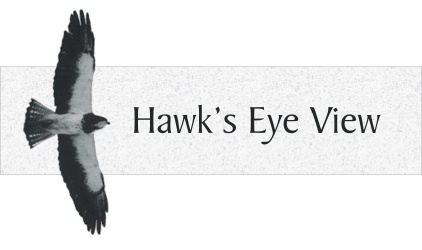

| May 2002
Forget the Gurus, Listen to the Horse As the controversy rages over who's method is the best, folks become more and more confused. People, its quite simple....listen to the horse. We have already established that for a trim to be truly natural, it must follow the paradigm of the wild horse. The wild model is the only model we have of high performance barefoot soundness. Anything else is a theory, an idea, a concept. Unlike an abstract "theory", the wild model is a reality - a concrete, living example out there for anyone to see and study. You do not have to take anyone's word for anything - you can go to wild horse country and see for yourself. It is available for anyone interested. One thing that has sparked my interest to comment on this matter is the insistence by some that there is nothing wrong with a trim that simply follows the underlying structure of the foot, that it is perfectly natural. Even if that means trimming into live sole to do it. They believe the outer capsule should always mimic, in angle and contour, the shape of the coffin bone within. Particularly, the sole must be shaped to a predetermined "correct" uniform thickness otherwise the all important hoof mechanism will not occur. HUH? Wild horses can't read. They cannot use a computer. No one told them about this mandate and so...guess what? They don't follow it. Yet, they have all the hoof mechanism a horse could want. There are many things still unknown about the wild equine foot. There is much research yet to be done - many questions yet to be answered. What is clear right now, though, is that diversity is the rule. Wild feet can be seen in all manner of configurations which may, or may not follow the contour of the coffin bone within. Let's look at this sole trimming issue of shaping the sole to the
underlying contour of the coffin bone - the volar surface. First of all,
it is virtually impossible to know what the contour of the coffin bone's
volar surface is - even with x-rays. People who follow this rule, cannot
possibly know exactly how that surface is contoured, so they use predetermined
specs based on averages. Taking the sole down to the frog sole juncture from
the mid-point of the frog to the apex then concaving from that point out to
the wall. What if that is too thin for that horse at that point in time? What
if this horse needs thicker sole on th emedial side of his sole than
he does on the lateral side? What if the entire sole on this foot on this
horse on this day needs to be thicker than the "average?" How do you know?
Loose flaky sole is what the horse is trying to shed, much like you and I shed layers of skin every day. If you have ever had a cast for a broken bone, you know how the layers of dead skin have piled up under it, because it wasn't able to shed away from the body - held there by the cast. The hoof will not be able to rid itself of flaky dead layers of sole if it is shod or if the horse is not using its feet enough to rid itself of the excess dead sole. Under this layer of flaky dead sole is firm, smooth, shiny sole referred to as "live sole." The flaky sole is what you can remove, although it is not always
necessary and in some cases not desireable to remove it all. Once you
have reached live sole that is where trimming must stop. Period. If you have
to trim into live sole to establish what you think is the proper contour,
then the horse was not ready to release it. If the horse is not ready
to release it, then you have no right to take it...ever. It doesn't matter what you think about the underlying structure or the contour of the coffin bone, or whatever else you think. Its not about what you think, its about what the horse is saying to you and its your job to listen. Its not your foot. Hawk |
© Copyright 2002, Tribe Equus - All Rights Reserved